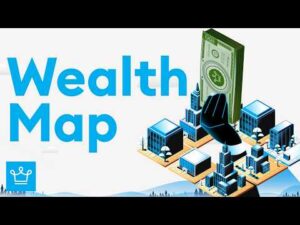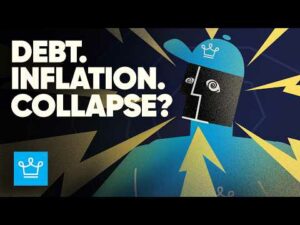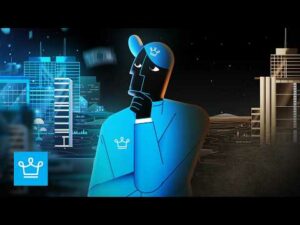Unlocking AI’s Hidden Goldmine: Why Insight-Driven Leaders Are the Only Ones Who’ll Win Big in the Next Tech Revolution
Ever feel like you’re drowning in data—surrounded by an endless ocean of numbers, charts, and spreadsheets, yet utterly parched for insights? It’s a lot like those thirsty sailors from Coleridge’s The Rime of the Ancient Mariner, stuck on a windless sea with “water, water, every where, Nor any drop to drink.” Now, swap that salty sea for the vast sea of operational, sales, customer, and employee data flooding your enterprise, and you’ll get the picture. Being “data-driven” has been the buzz for years, but honestly, who hasn’t been left wondering: Sure, we have piles of data, but where are the real insights? Jenny Dearborn and Kelly Rider’s The Insight-Driven Leader dives deep into exactly how companies can turn that tidal wave of data into a driving force for growth. With AI and workforce analytics stepping up as game changers, the question isn’t just can you afford to harness these insights—it’s can you afford not to? Ready to cut through the noise and unleash your organization’s hidden potential? This is the handbook to get you there. LEARN MORE
In The Insight-Driven Leader, authors Jenny Dearborn and Kelly Rider explain how companies can transform data into a transformative tool for growth
“Water, water, every where, Nor any drop to drink.”
The thirsty sailors stranded on a windless sea in this 1834 poem by Samuel Taylor Coleridge bemoan their fate, surrounded by an ocean of salty water.
If you’re a business leader, you are undoubtedly in a predicament akin to The Rime of the Ancient Mariner (hopefully minus the fever dream-like magical realism): surrounded by data — data everywhere.
Operational data, sales data, customer data, employee data and on and on.
But at most companies, that data is as useless as vast sea water to beleaguered sailors, unless you can extract insights from it. It’s no easy task.
For years, companies have declared themselves ‘data-driven’ with much fanfare but little to show for it. So, insight-driven?
All the harder. But can you really afford not to try?
Businesses worldwide face storms of increased competition, economic uncertainty, rapid technological developments, severe talent shortages, global instability, cybersecurity threats, and complexities from social and political shifts.
And a ‘workforce’ doesn’t even mean what it used to: now employees, gig workers, outsourced labour, robots, and AI bots, with all the attendant potential for extraordinary advancement by getting it right or crushing value destruction from getting it wrong.
You need every possible tool at your disposal to understand how your organisation functions — and more importantly, where, when, and why it fails to function.
And you need it RIGHT NOW.
Fortunately, a mere 200 years after Coleridge penned his magnum opus, technology is poised to make transforming data into insights a daily reality.
Artificial intelligence, especially Generative Artificial Intelligence (GenAI), is transforming not just work but also data and analytics, making it easier (even for those with little data science training), more affordable, and more realistic than ever to generate Workforce Insights (WFI), the powerful revelations that come from Workforce Analytics (WFA): combining, studying, and maximizing the value of data about your workforce (human and machine) and data about your business.
BECOMING INSIGHT-DRIVEN
Workforce Analytics is like having the cheat codes to understand what makes your business tick.
Imagine spotting exactly why some teams are firing on all cylinders while others lag.
Or uncovering which behaviours lead to high sales, customer loyalty, or top-notch service.
Businesses are using Workforce Insights right now to solve real problems — from slumping sales to digital transformations.
In fact, research published in November 2024 by The Josh Bersin Company, a highly respected source of human capital management insights, found that companies excelling at Workforce Analytics* are more likely to experience a range of benefits.
These include exceeding financial targets (three times), delighting customers (three times), and effectively adapting to change (nine times).
THE ALBATROSS
Yes, we’re going to carry the metaphor a bit further, because honestly, it’s pretty perfect. In Coleridge’s tale, the eponymous Mariner is burdened by an enormous white bird he’s carrying around his neck, having shot it for no good reason (only the start of his troubles).
While it’s unlikely that you’ve shot an albatross recently, the imagery is useful.
Think of that fetid fowl as the untapped potential of your data becoming a drag on your productivity, innovation, highest visibility project, and competitive advantage.
Or your own inability to make sense of the staggering quantities of data within your remit (you’d be in good company on that front).
Whatever the case, Workforce Insights is powerful enough to free you from those burdens. There’s just one catch.
Workforce Analytics requires workforce data from, and deep partnership with, Human Resources.
Yes, HR — the function so many love to hate. ARE WE ANY SMARTER? In July 2015, Harvard Business Review’s cover boldly declared: ‘It’s Time to Blow Up HR and Build Something New.’
The articles inside laid out a revolutionary vision for HR, courtesy of thought leaders like Ram Charan, John Boudreau, and Peter Cappelli.
They presented clear, brilliant ideas on how to evolve HR from process-focused to driving measurable business outcomes.
Yet here we are, exactly 10 years later, still grappling with many of the same issues. The problem wasn’t the vision; it was the follow-through on the part of business leaders. That’s what we hope to change with this modest volume.
Because an evolved, insight-driven HR function isn’t a nice-to-have anymore. If you want the competitive advantages of Workforce Analytics and AI, the time for hesitation has passed.
IT’S (MOSTLY) NOT HR’S FAULT
If you’re a business leader — especially a CEO — and something that’s not working optimally at your company never gets fixed, wouldn’t that be… on you?
Sure, some of HR’s bad rap is merited. HR can be slow and out of touch, too focused on operations and rules.
That’s not good for business — yours.
But some of HR’s baggage just comes with the territory.
The function has many unenviable roles — interpersonal relations referee and policy enforcer are just two.
And HR impacts every employee in ways that no other function does, including extremely sensitive issues like hiring, firing and pay. It’s messy. And often really not fun.
And yet, is an entire field truly doomed to never grow into its potential? With business leaders paying the ultimate price in the form of problems that go unsolved, productivity that remains weak, workers that are un-engaged, paying sky-high costs to rehire and retrain employees headed for greener pastures, and lost opportunities to innovate and gain (or keep) a competitive edge?
WE’VE SEEN THIS MOVIE BEFORE
So, what if your HR department was…’great’? What if it was staffed with strategic, efficient, business-minded, analytical problem-solvers?
Professionals who reliably helped you maximise productivity and create the conditions (operational and cultural) where employees would go the extra mile to achieve your most important goals?
It’s not so crazy a notion, even if many business leaders have never seen great HR in action. Once upon a time, Finance was a bunch of paper-pushers focused on book-keeping.
It was the nerds who kept the computers running.
Marketing printed ads and threw parties. These functions all grew into strategic powerhouses because shifting realities meant companies couldn’t stay competitive otherwise.
And they became high-performing when leaders saw it was in their own best interest to make it happen: they raised expectations and accountability, elevated those functions’ leaders to the C-suite and made them active participants in board of directors meetings, aligned their strategies, drove cross-functional collaboration, and invested in the right people and technology.

HR is on the brink of that same transformation, especially now that automation is removing so much of the function’s administrative load. We wrote The Insight-Driven Leader to show how you can help HR evolve into an essential value creator, too.
This isn’t about doing HR a favour — it’s about making sure you have the strategic support you need. If you want HR to deliver insights that align with your goals, you’ve got to let them do more than process paperwork.
The highest performing companies already have top-notch HR functions. So why not you, too?
And the time is RIGHT NOW: as AI and automation free HR professionals from operational tasks and enable them to embrace advanced analytics, they can become the strategic partners you need them to be. But they can’t do it alone.
Like it or not, if you want to become an insight-driven leader imbued with superpowers by Workforce Insights, we know a twoway street you can take to get there.
HR transformation happens when leaders like you see HR as an asset, not an afterthought. The companies that get this are miles ahead.
This is an edited extract from The InsightDriven Leader: How HighPerforming Companies are Using Analytics to Unlock Business Value, by Jenny Dearborn and Kelly Rider (published by Wiley, June 2025). Dearborn is an experienced executive leader in enterprise technology sales and human resources. Rider is a talent and learning strategist with over ten years’ experience on leadership teams.




















Post Comment